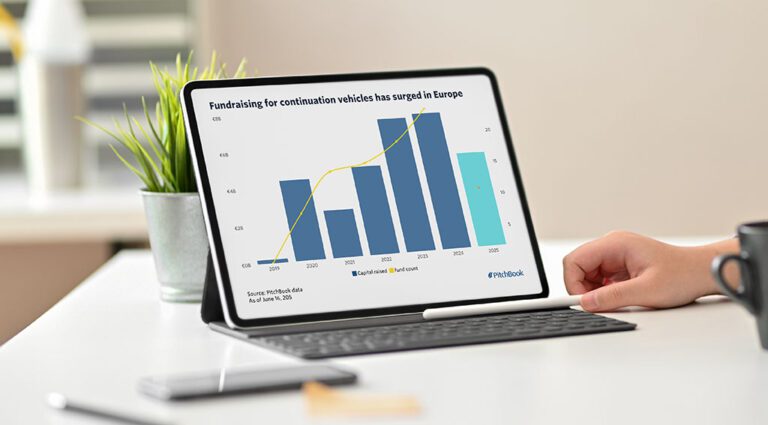The Rise of Continuation Funds in Europe: A New Investment Trend
Continuing funds, a type of investment vehicle in the private equity sector, are rapidly gaining traction across Europe. This fundraising strategy is poised to redefine how assets are managed as existing funds near the end of their life cycles.
Fundraising Boom in 2025
As of June 16, 2025, continuation funds in Europe have successfully raised €5.3 billion, which is nearly 70% of the record €7.7 billion amassed in 2024. This promising trend indicates that the sector is on track to achieve unprecedented fundraising levels in 2025, according to a recent Pitchbook report.
Understanding Continuation Funds
Continuation funds function as secondary market investment vehicles designed to extend the holding period of specific assets belonging to an existing fund. Usually, private equity or venture capital funds have a defined lifespan. However, challenges arise when promising startups require additional time to mature.
The Mechanics of Continuation Funds
By converting assets into continuation funds, original investors have the opportunity to cash out while new or existing investors can step in. This allows General Partners (GPs) and asset managers to retain valuable investments for longer periods, optimizing their potential for growth and ultimately delivering greater value.
Emerging Trends Amid Market Pressure
The increasing interest in continuation funds can be attributed to the necessity for General Partners to provide liquidity to Limited Partners (LPs) while preserving valuable assets. Traditional exit routes, such as mergers and acquisitions (M&A) or initial public offerings (IPOs), are limited, escalating the demand for these innovative vehicles.
Expert Opinions on Growth Caution
Experts are urging caution regarding the rapid adoption of continuation funds. Jonathan Graham, head of Lincoln’s Private Funds Advisory Group in Europe, emphasizes that GPs should only utilize these vehicles if they genuinely believe in the potential for asset appreciation. If lower-quality assets are included merely to maintain cash flow, it could undermine investor confidence and harm the continuation fund market.
A Bright Future for Continuation Funds
Ravi Chopra, co-leader of Goodwin’s secondary practice, maintains a more optimistic perspective, highlighting that continuation funds can effectively serve a range of investment qualities. In an environment where M&A opportunities are scarce, these vehicles provide a pragmatic solution for GPs seeking to optimize returns for their investors.
Conclusion: Growth Drivers and Market Analysis
In recent years, the European continuation fund landscape has seen an impressive transformation, with total fundraising increasing dramatically from €0.2 billion in 2019 to over €7.5 billion annually in 2023 and 2024. This growth is largely driven by European venture capital funds reaching the end of their terms amid a slow exit market exacerbated by economic uncertainty. Fintech companies, in particular, are among those navigating complex regulatory challenges while seeking to capitalize on potential acquisitions.

